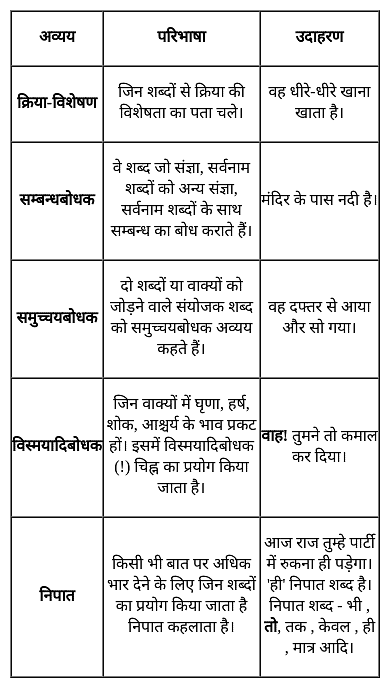HP JBT TET Mock Test - 8 - HP TET MCQ
30 Questions MCQ Test HP TET Mock Test Series 2024 - HP JBT TET Mock Test - 8
Which of the following would be the characteristic of an effective teacher?
| 1 Crore+ students have signed up on EduRev. Have you? Download the App |
What should be the criterion for evaluating a teacher's performance?
Which statement is true about the Summative Evaluation?
I. It is an evaluation that seeks to determine how the learners or students are progressing through a certain learning goal.
II. It is an evaluation that assesses a student’s mastery of a subject or topic after instruction
Nisha, a biology teacher uses different coloured markers on board while drawing diagrams. What would be her purpose(s) for using different colours?
Directions: Answer the following question by selecting the most appropriate option.
Anaesthesia in any part of the body means a loss of sensation, either permanent or temporary. The term is usually used to describe the artificially produced loss of sensation which makes a surgical operation painless.
There are four main types of anaesthesia: General, Spinal, Regional, and Local. Anaesthetics may be given as gases, by inhalation; or as drugs injected into a vein. A patient given general anaesthesia loses consciousness. Anaesthesia of a fairly large area of the body results from injecting the anaesthetic drug into the spinal canal: all that portion of the body below the level at which the drug is injected is anaesthetised. Regional anaesthesia is the injecting of the nerves as they emerge from the spinal column: the anaesthesia induced by this method affects only that area of the body supplied by those nerves. In local anaesthesia, the drug is injected directly at the site of the operative incision and sometimes also into the nearby surrounding tissues.
Formerly, the most commonly used local anaesthetic was cocaine, a drug extracted from the leaves of the coca bush and introduced in 1879. But cocaine has some disadvantages and, sometimes, undesirable side-effects. For spinal, regional and local anaesthesia, procaine, or one of the several modifications of procaine, is now widely used instead of cocaine, for very limited and short operations, such as opening a small abscess. Local anaesthesia may be induced by spraying (rather than injecting) a chemical, ethyl chloride, on a small area of the skin; in changing from the liquid to the gaseous state, this drug freezes the area sprayed, and permits painless incision.
Q. An anaesthetic is inhaled when it is administered
Read each of the following passages and answer the questions by selecting the most appropriate option.
Scotland Yard is the headquarter of the Criminal Investigation Department of London Metropolitan Police of Britain. It was established in 1878. It is named from its original location in Scotland Yard, off Whitehall. Officers who work here are involved in solving serious crimes. This police force looks after about 10 million people living in Greater London.
A police force of over 18,000 men and women is controlled from here by the Commissioner. Here, too, is the famous Information Room, working day and night, which receives information in a few seconds by telephone, radio and electronic devices about every incident in London, very important to the police. A special department deals with public relations, conducts tours, distinguished visitors, the Press and so on.
A daily newspaper edited and printed by the Scotland Yard contains particulars of persons `wanted' by the police with detailed descriptions of criminals and their photographs. A copy of the paper reaches every police station in the country. Scotland Yard catches crooks. Every convicted criminal finds a place on the index of the Criminal Record Office- his height and build, colour of hair and eyes, fingerprints, and above all, his way of going about crime. The criminal record office has records and they are used by the various police forces throughout the country.
The Scotland Yard has a map room. Here huge maps of London are hung. Some maps show every street and house. There is a crime map, made up at 8 o'clock every morning. It shows by pinned coloured flags every crime that has been committed in London. There is also a Traffic Map, showing from day to day where the most dangerous areas are in the city. The standard of police work set up a century and a quarter ago, perhaps the finest and the most scientific in the world, is maintained by the Scotland Yard.
Q. Pick out the word from the passage that means "found guilty":
Directions: Answer the following question by selecting the most appropriate option.
Anaesthesia in any part of the body means a loss of sensation, either permanent or temporary. The term is usually used to describe the artificially produced loss of sensation which makes a surgical operation painless.
There are four main types of anaesthesia: General, Spinal, Regional, and Local. Anaesthetics may be given as gases, by inhalation; or as drugs injected into a vein. A patient given general anaesthesia loses consciousness. Anaesthesia of a fairly large area of the body results from injecting the anaesthetic drug into the spinal canal: all that portion of the body below the level at which the drug is injected is anaesthetised. Regional anaesthesia is the injecting of the nerves as they emerge from the spinal column: the anaesthesia induced by this method affects only that area of the body supplied by those nerves. In local anaesthesia, the drug is injected directly at the site of the operative incision and sometimes also into the nearby surrounding tissues.
Formerly, the most commonly used local anaesthetic was cocaine, a drug extracted from the leaves of the coca bush and introduced in 1879. But cocaine has some disadvantages and, sometimes, undesirable side-effects. For spinal, regional and local anaesthesia, procaine, or one of the several modifications of procaine, is now widely used instead of cocaine, for very limited and short operations, such as opening a small abscess. Local anaesthesia may be induced by spraying (rather than injecting) a chemical, ethyl chloride, on a small area of the skin; in changing from the liquid to the gaseous state, this drug freezes the area sprayed, and permits painless incision.
Q. The expression, 'the site of the operative incision', means
"बढ़त-बढ़त सम्पत्ति सलिल मन-सरोज बढ़ जाए। घटत-घटत फिर ना घटै करु सामूल कुम्हिलाय।।" में कौन-सा अलंकार है?
Rubrics of assessment for the geometry lesson on points and lines in Class IV
In the figure, side of each square is 1 cm. The area, in square cm, of the shaded part is _____.
To teach various units of length to the students of Class III, a teacher shall take the following materials to the class:
Amit can complete a work in 25 days and Punit can complete the same work in 20 days. Punit alone worked at it for 10 days and then left the work. In how many days will Amit alone complete the remaining work?
Consider the following statements
(i) x - 2 is a factor of x3 - 3x2 + 4x - 4.
(ii) x + 1 is a factor of 2x3 + 4x + 6
(iii) x - 1 is a factor of x5 + x4 - x3 + x2 - x + 1
In these statements
The degree of the remainder r(x) when p (x) = bx3 + cx + d is divided by a polynomial of degree 4 is
If altitude of the sun is 60°, the height of a tower which casts a shadow of length 30m is
A public school has about two to three children with special needs in every class. Some children are physically or mentally challenged. These children study with other children while sitting in the same class. The public school mentioned above follows which of the following?
‘Social and political life’ (SPL) draw its learning experiences mostly from which of the following subjects?
I. Economics
II. History
III. Sociology
IV. Political science
In the reign of Governor-General Lord Dalhousie, who among the following was deported to Singapore for declaring his local State independent?
Which of the following martial art originated in Himachal Pradesh?
|
50 tests
|

















